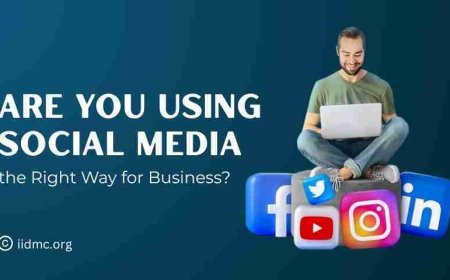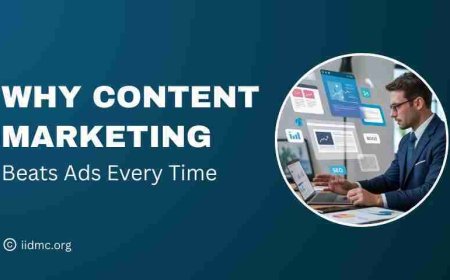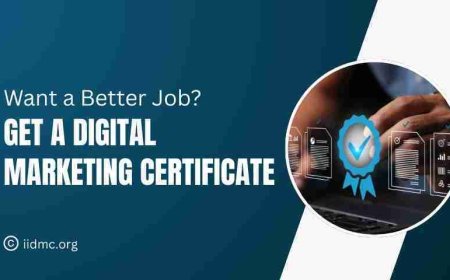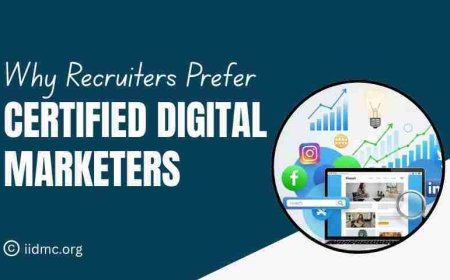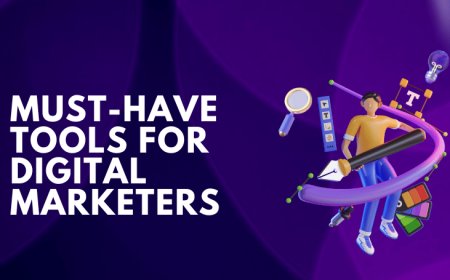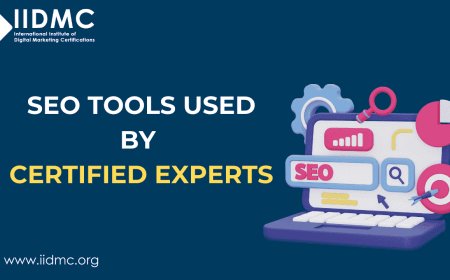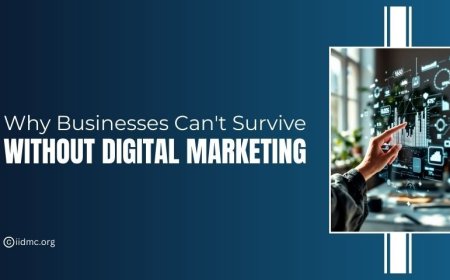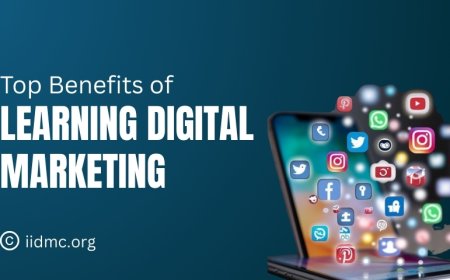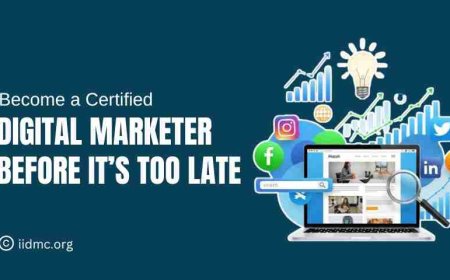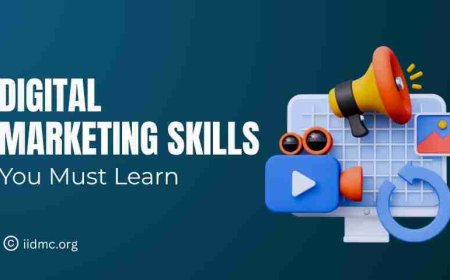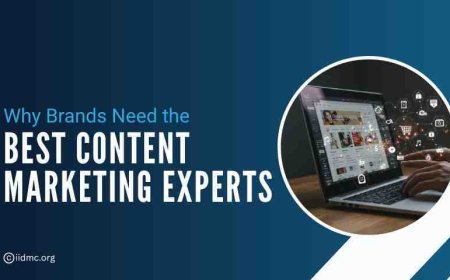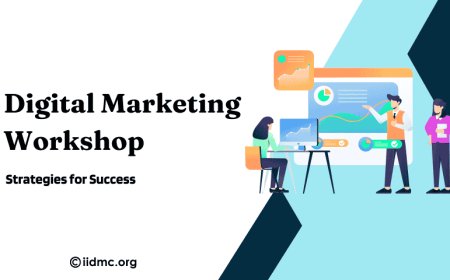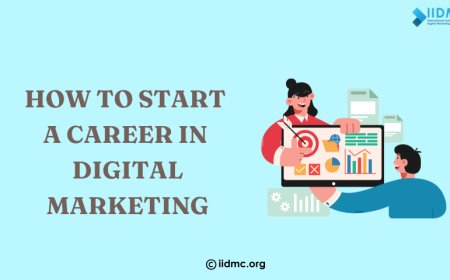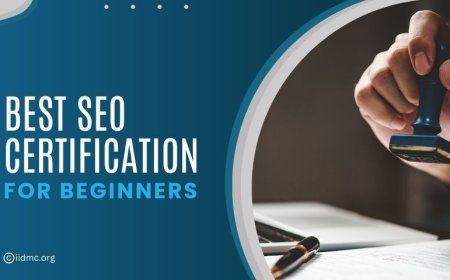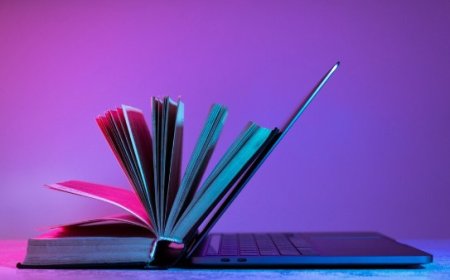Skills for a Google Ads Specialist Role
Discover the top skills every Google Ads Specialist needs to excel, including data analysis, ad copywriting, budget management, conversion tracking, and continuous learning for effective digital marketing success.
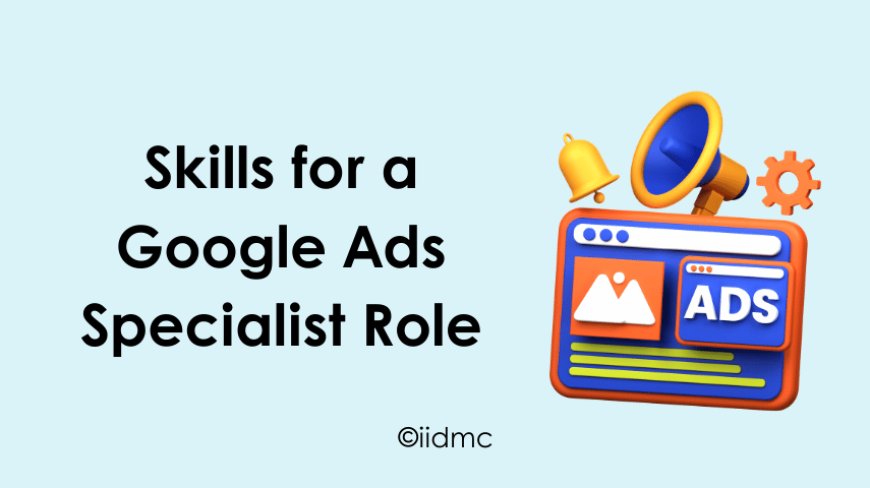
To prosper as a Google Ads Specialist, mastering the right skill set is essential. With businesses increasingly relying on paid digital advertising to drive growth, the demand for experts who can optimize campaigns and deliver strong results is on the rise. Whether you're looking to begin your journey or advance your career in this space, understanding the key skills needed for a Google Ads Specialist role is crucial. From keyword research and ad copywriting to data analysis and performance optimization, these skills will empower you to create effective results and improve campaigns.
In-Depth Knowledge of Google Ads Platform
Mastering the Google Ads platform involves understanding various components that make up a successful campaign. Key areas include:
-
Campaign Structures: A clear grasp of how campaigns are organized, including campaigns, ad groups, and ads. This hierarchy helps ensure your ads target the right audience effectively.
-
Bidding Strategies: There are different bidding models, such as Cost-Per-Click (CPC), Cost-Per-Acquisition (CPA), and Cost-Per-View (CPV), each designed to optimize your budget based on the campaign goals.
-
Ad Types: Familiarity with the variety of ad formats like search ads, display ads, video ads, and shopping ads is crucial to ensure you reach your target audience across different platforms.
-
Google Ads Interface Proficiency: Navigating through the Google Ads interface efficiently is important for campaign monitoring, performance optimization, and report generation. Regular use of tools such as keyword planners, audience insights, and performance reports helps in making data-driven decisions.
-
Optimization Techniques: Knowledge of how to fine-tune ad relevance, improve Quality Scores, and adjust bids for better ROI is essential.
Keyword Research and Analysis
Importance of Selecting the Right Keywords for Effective Targeting
-
Relevance: Choosing relevant keywords ensures that your ads appear to the right audience, increasing the chances of engagement and conversion.
-
Traffic Potential: The right keywords can significantly boost traffic to your website. Analyzing search volume helps you identify terms that users are actively searching for.
-
Competitive Advantage: Understanding the competitiveness of keywords allows you to target less competitive phrases where you can rank higher, improving more traffic at a lower cost.
-
Cost Efficiency: Targeting high-performing keywords can lower your cost-per-click (CPC) and improve your overall return on investment (ROI).
Tools and Techniques for Keyword Research
-
Google Keyword Planner: This free tool helps you discover new keywords, see average monthly searches, and get suggested bid estimates.
-
SEMrush: A comprehensive SEO tool that provides keyword suggestions, competition analysis, and insights into competitor keyword strategies.
-
Ahrefs: This tool offers keyword research capabilities along with backlink analysis, making it easier to understand the competitive landscape.
-
Ubersuggest: A user-friendly tool that generates keyword ideas, provides search volume, and shows related keywords.
-
Competitor Analysis: Reviewing competitor ads and their keywords can offer valuable insights into effective targeting and market gaps.
-
Long-Tail Keywords: Focus on long-tail keywords that are more specific and often less competitive, which can lead to higher conversion rates.
-
Search Intent Analysis: Understand the intent behind keywords—informational, navigational, or transactional—to align your content and ads effectively.
By using these tools and techniques, marketers can enhance their keyword strategies, ultimately driving better results in their campaigns.
Ad Copywriting and Creative Strategy
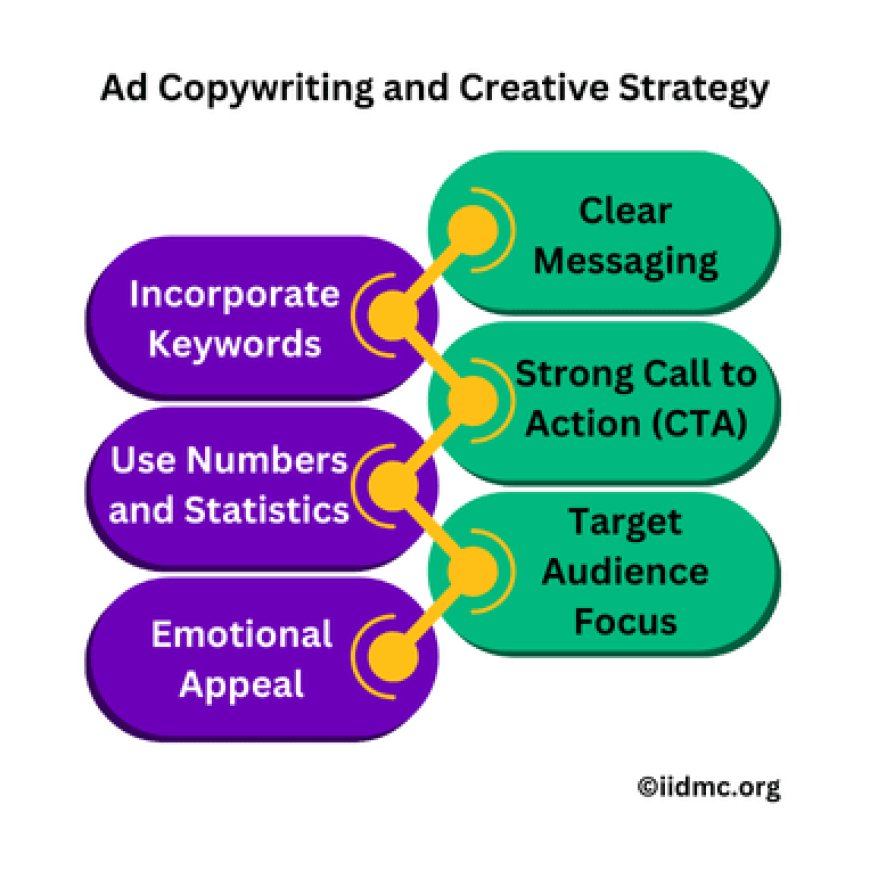
Crafting Compelling Ad Copy That Drives Clicks and Conversions
-
Clear Messaging: Ensure your ad copy communicates a clear and concise message. Highlight the main benefit or unique selling proposition (USP) to grab attention quickly.
-
Strong Call to Action (CTA): Use persuasive CTAs that encourage users to take action, such as “Sign Up Now,” “Get Your Free Trial,” or “Shop Today.” The CTA should create a sense of urgency or exclusivity.
-
Target Audience Focus: Tailor your ad copy to resonate with your specific target audience. Use language, tone, and messaging that aligns with their preferences and needs.
-
Incorporate Keywords: Include relevant keywords naturally in your ad copy to enhance visibility and relevance in search results.
-
Use Numbers and Statistics: Incorporating data, such as discounts, ratings, or customer testimonials, can increase credibility and entice users to click.
-
Emotional Appeal: Craft messages that evoke emotions. Storytelling or relatable scenarios can create a connection that encourages users to engage.
A/B Testing Different Ad Variations for Best Performance
-
Define Objectives: Start by determining the specific goals of your A/B test, such as increasing click-through rates (CTR) or improving conversion rates.
-
Test One Element at a Time: Focus on changing one variable at a time (e.g., headline, CTA, or description) to accurately measure its impact on performance.
-
Use Clear Metrics: Establish metrics to evaluate the success of each variation, such as CTR, conversion rate, or cost per conversion.
-
Gather Sufficient Data: Run the test long enough to collect enough data for statistical significance. A larger sample size leads to more reliable results.
-
Analyze Results: Review the performance of each ad variation and determine which elements contributed to better results. Use this information to refine your future ad strategies.
-
Iterate and Optimize: A/B testing is an ongoing process. Continuously test new variations based on previous learnings to keep optimizing your ad copy for better performance.
By effectively crafting compelling ad copy and implementing A/B testing strategies, marketers can enhance their campaigns' effectiveness, driving higher engagement and conversions.
Data Analysis and Reporting
Ability to Interpret Campaign Performance Data
-
Key Metrics: Understand essential metrics like Click-Through Rate (CTR), Conversion Rate (CVR), and Return on Ad Spend (ROAS) to gauge campaign effectiveness.
-
Trend Analysis: Identify performance patterns over time and recognize seasonal trends or shifts in audience engagement.
-
Segment Analysis: Break down data by demographics and device type to target high-performing segments effectively.
-
Data Visualization: Use tools like Google Data Studio to create visual reports that highlight key insights.
Using Analytics to Refine Strategies and Improve ROI
-
Identify Weaknesses: Pinpoint underperforming ads and keywords to make necessary adjustments.
-
Optimize Targeting: Leverage audience insights to refine targeting and focus on high-converting demographics.
-
Adjust Bidding Strategies: Modify bids based on performance data to enhance ROI.
-
A/B Testing Insights: Implement changes from A/B test results to improve ad performance.
-
Regular Reporting: Create performance reports to track progress and align on strategy.
-
Actionable Recommendations: Turn data insights into actionable strategies for future campaigns.
By effectively analyzing data and refining strategies, marketers can enhance ROI and optimize advertising efforts.
Budget Management and Bidding Strategies
Optimizing Ad Spend While Maintaining Performance
-
Set Clear Goals: Define specific objectives for your campaigns, such as lead generation or brand awareness, to guide budget allocation.
-
Monitor Performance: Regularly track key metrics (e.g., CTR, conversion rates) to identify areas where ad spend can be optimized.
-
Adjust Budgets: Reallocate budgets from underperforming ads to those yielding better results to maximize overall effectiveness.
-
Use Automated Rules: Usage automated rules in platforms like Google Ads to adjust budgets based on performance thresholds, ensuring efficiency.
Understanding Different Bidding Strategies and When to Use Them
-
Cost-Per-Click (CPC): Ideal for campaigns focused on driving traffic to a website. Use when you want to control costs per click while maximizing visibility.
-
Cost-Per-Acquisition (CPA): Best for campaigns aimed at driving conversions. Set a target CPA based on your acceptable cost for acquiring a customer.
-
Return on Ad Spend (ROAS): Use this strategy when you want to maximize revenue relative to ad spend, ideal for e-commerce and sales-driven campaigns.
-
Maximize Clicks: Suitable for generating traffic quickly without strict cost controls. Best for awareness campaigns where the goal is visibility.
-
Target Impression Share: Use when brand visibility is crucial, ensuring your ads appear in prominent positions.
By effectively managing budgets and selecting the right bidding strategies, marketers can optimize ad spend and enhance campaign performance.
Conversion Tracking and Optimization
Setting Up Conversion Tracking to Measure Success
-
Define Conversion Goals: Identify key actions you want users to take, such as form submissions, purchases, or newsletter sign-ups.
-
Implement Tracking Codes: Use tools like Google Tag Manager or the conversion tracking code from your ad platform to track conversions accurately.
-
Test Tracking Setup: Conduct tests to ensure conversions are being recorded correctly in your analytics platform. Verify that all desired actions are captured.
-
Use Multi-Channel Tracking: Implement cross-device and cross-channel tracking to get a comprehensive view of user interactions leading to conversions.
Strategies for Improving Conversion Rates Over Time
-
A/B Testing: Regularly test different elements of your landing pages, such as headlines, CTAs, and visuals, to identify what drives higher conversions.
-
Optimize Landing Pages: Ensure landing pages are relevant, user-friendly, and optimized for mobile devices. Fast loading times and clear messaging enhance user experience.
-
Refine Targeting: Analyze audience data to better understand your ideal customers. Adjust targeting strategies to reach more qualified leads.
-
Personalization: Use dynamic content and personalized messaging to create a tailored experience that resonates with your audience.
-
Leverage Social Proof: Incorporate testimonials, reviews, and case studies to build trust and encourage users to convert.
-
Continuous Analysis: Regularly review conversion data to identify trends, challenges, and opportunities for improvement, allowing for ongoing optimization.
By effectively setting up conversion tracking and employing strategies to enhance conversion rates, marketers can significantly boost campaign success and achieve their business objectives.
Continuous Learning and Adaptation
Keeping Up with Google Ads Updates and Industry Trends
-
Follow Official Resources: Regularly check Google Ads blogs, newsletters, and updates to stay informed about new features, policies, and best practices.
-
Join Online Communities: Engage in forums and social media groups where professionals discuss updates and share insights about Google Ads and digital marketing trends.
-
Attend Webinars and Conferences: Participate in industry webinars, workshops, and conferences to learn from experts and network with peers.
-
Subscribe to Industry Publications: Follow reputable marketing publications and websites to keep up with broader industry trends and changes in consumer behavior.
Importance of Staying Flexible and Continually Improving Skills
-
Adapt to Changes: The digital marketing landscape evolves rapidly. Being flexible allows you to pivot strategies based on new trends and technologies.
-
Embrace New Tools and Techniques: Stay open to experimenting with new tools, platforms, and methodologies that can enhance your marketing effectiveness.
-
Invest in Professional Development: Pursue certifications, online courses, or training programs to deepen your knowledge and expertise in Google Ads and related fields.
-
Feedback and Self-Assessment: Regularly assess your performance and seek feedback from peers or mentors to identify areas for improvement.
-
Cultivate a Growth Mindset: Foster a mindset that embraces learning and adaptation, allowing you to thrive in a competitive and ever-changing environment.
By prioritizing continuous learning and remaining adaptable, marketers can stay ahead in the fast-paced world of Google Ads and digital marketing, ensuring long-term success and effectiveness.
Essential skills for Google Ads Specialists include data analysis, effective ad copywriting, budget management, conversion tracking, and continuous learning. Mastering these skills will help you make data based decisions, create compelling ads, and optimize campaign performance.
To achieve success in your digital marketing career, consider developing these skills through training programs like those offered by IIDMC (International Institute of Digital Marketing and Certification). Embrace the opportunity to learn and grow, ensuring you stay competitive in the fast-paced digital world.


